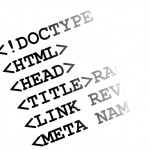 To read this article in HTML 2.0, click here. To read it in HTML 4.0, click here.
To read this article in HTML 2.0, click here. To read it in HTML 4.0, click here.
There is allot of talk at the moment about HTML 5 and far be it from me to jump on the blog post band wagon and post something about HTML 5. For instance, I did not post anything about Day being purchased by Adobe and my feelings about the impending doom to Day customers who fell in love with Day’s great technical marketing and Open Source strategy. My feeling is just that, a feeling, and Adobe and Day tell us this is not the case so I probably should not worry. Anyway, I digress. I have been looking at HTML 5 and it looks to be the best thing to happen to the web since… well since ever.
Since it become geek cool to have a web page, I have had one. That is not to say I was cool, but at least I tried. I have had many, many websites; some successful, others not. In all of those sites there was probably millions of lines of code, some written in beautiful HTML and others written in the crappiest hacked code you have ever seen.
Way back when I started, there was no HTML standard. HTML 2.0 (November 1995) was the first standard and was versioned as 2.0 to separate it from the many informal HTML versions that were around since 1990. Building out pre 2.0 websites using VI, Netscape Navigator browser on our HP-UX terminals seemed like the cutting edge (it was) but now is somewhat laughable when I think about my current development environment and my browser on my phone. By the year 2000, HTML 2.0 was obsolete…
HTML 2.0 defined many features, that we now take for granted, for the first time; HTML, HEAD and BODY all made an official appearance as well as LINK and TITLE. But missing from 2.0 would be things like STYLE (HTML 3.2), DIV (HTML 3.2) and even CENTER (HTML 3.2 and already deprecated) – they might have been available but they were not standard and only available to some browsers. LINK allowed links to style sheets but there was no standard for style sheets and few browsers could even implement the CSS1 standard when it was released a year later (IE 5 was the first to a have full (99%) support for CSS and that was in 2000). To my surprise the trusted BLINK and MARQUEE have never been in a standard, it seems that someone at W3C had some good taste.
Without STYLE and DIV elements, modern web designer would be unable to make any modern design look even passable. But with my trustee P tag at hand and a TABLE or two we can get something like a nice design and get it validated against the 2.0 standard. Oh wait, there is no TABLE element in 2.0 as that was introduced in 3.2. I shall put away the single pixel gif, I have in case of emergencies, for another day.
Other resources: